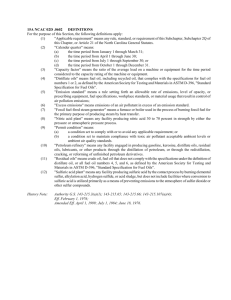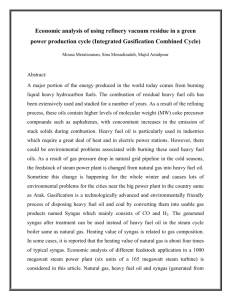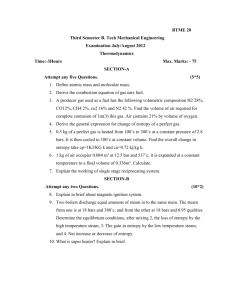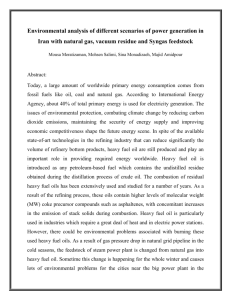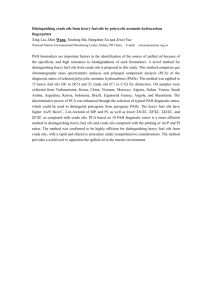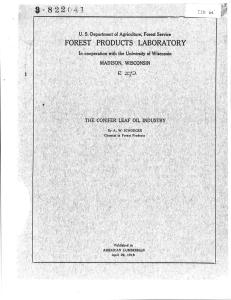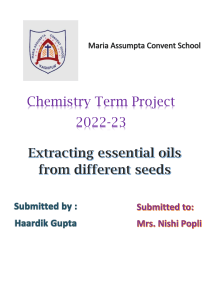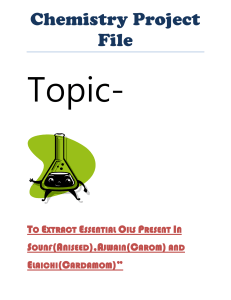Objective: Provide information necessary to relate customer
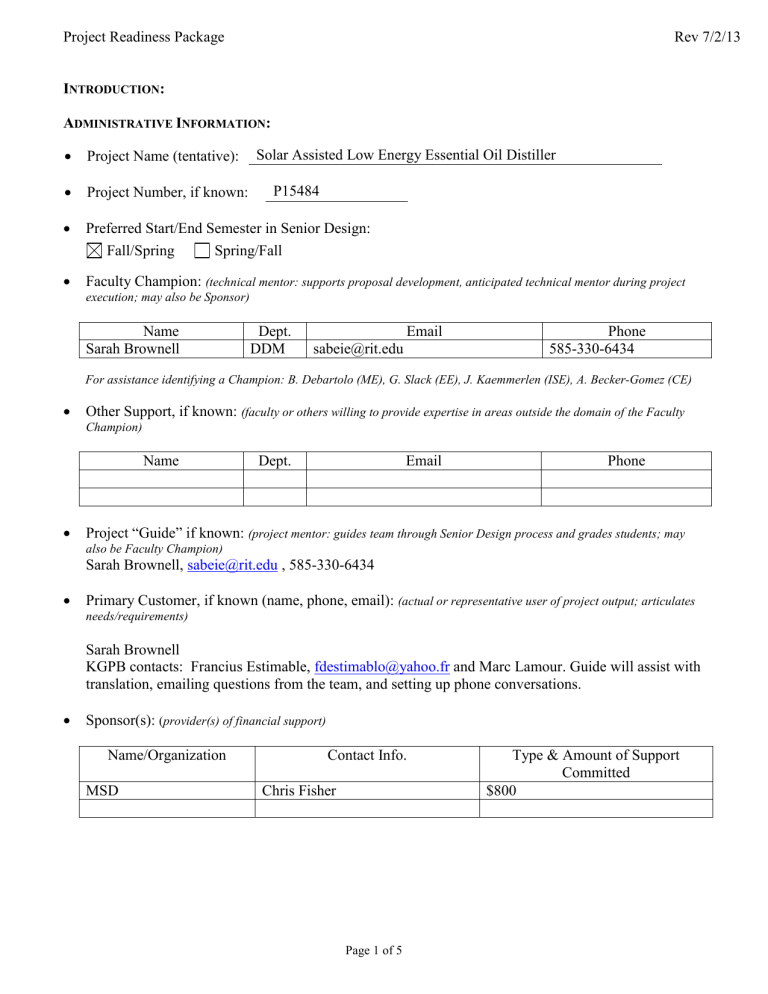
Project Readiness Package Rev 7/2/13
I
NTRODUCTION
:
A DMINISTRATIVE I NFORMATION :
Project Name (tentative): Solar Assisted Low Energy Essential Oil Distiller
Project Number, if known: P15484
Preferred Start/End Semester in Senior Design:
Fall/Spring Spring/Fall
Faculty Champion: (technical mentor: supports proposal development, anticipated technical mentor during project execution; may also be Sponsor)
Name
Sarah Brownell
Dept.
DDM sabeie@rit.edu
Email Phone
585-330-6434
For assistance identifying a Champion: B. Debartolo (ME), G. Slack (EE), J. Kaemmerlen (ISE), A. Becker-Gomez (CE)
Other Support, if known: (faculty or others willing to provide expertise in areas outside the domain of the Faculty
Champion)
Name Dept. Email Phone
Project “Guide” if known:
(project mentor: guides team through Senior Design process and grades students; may also be Faculty Champion)
Sarah Brownell, sabeie@rit.edu
, 585-330-6434
Primary Customer, if known (name, phone, email): (actual or representative user of project output; articulates needs/requirements)
Sarah Brownell
KGPB contacts: Francius Estimable, fdestimablo@yahoo.fr
and Marc Lamour. Guide will assist with translation, emailing questions from the team, and setting up phone conversations.
Sponsor(s): ( provider(s) of financial support)
Name/Organization Contact Info.
Chris Fisher $800
Type & Amount of Support
Committed
MSD
Page 1 of 5
Project Readiness Package Rev 7/2/13
P ROJECT O VERVIEW : 2-3 paragraphs that provide a general description of the project – background, motivation, customers, problem you’re trying to solve, project objectives .
Farmers in the Cooperative KGPB in Bornge, Haiti have requested help to develop methods to obtain more income from their agricultural products by transforming them for export or by implementing improved storage methods to reduce waste. This farmers group operates in one of the more impoverished and remote regions of Haiti. While food is generally available from farming, villagers lack access to cash for activities such as sending kids to school and paying for medications and clinic visits. They face difficulties in turning their agricultural products into cash. Good food often ends up spoiling before being sold despite the fact that there is a shortage of food in Haiti and much malnutrition. Infrastructure problems such as non-existent or poor roads, few ports, sparse electrical grid coverage, and high fuel costs inhibit perishable produce from getting to market safely and especially from reaching the more lucrative international markets. Multiple MSD teams will tackle different possible solutions for increasing the income and, therefore, the overall wellbeing of the cooperative families.
Essential oils are an agricultural product that the farmer’s group could develop for export, because of the following advantages:
The tropical climate is well suited for growing many types of plants that are commonly used for essential oil such as vetiver, lemongrass, basil, mint, eucalyptus, etc.
Because so little oil can be obtained from each plant, the volume of the agricultural product is greatly reduced, facilitating transport.
For similar reasons, the product is of high monetary value.
Essential oils do not require refrigeration during transport and have long shelf lives.
Essential oils can be used in non-food applications such as perfumes, air fresheners, laundry soap and bath products that may require less stringent regulations than food or therapeutic products.
(“By far, the majority of essential oils produced today are for the perfume industry. This industry is able to produce a high volume of aromatic oils using high pressure, high temperatures, and chemical solvents because it does not require a therapeutic standard.” http://www.familyessential-oils.com/essential-oil-distillation.html
)
Haiti is already a major producer of essential oil from vetiver from the southern coast. However, export of vetiver oil is controlled by a large company and little of the money reaches farmers.
Essential oils are traditionally produced by a steam distillation process (figure 1) where steam is passed over the plant materials in an, often pressurized, chamber. The steam is collected and condensed, and then the oil can be separated from the water by specific gravity. One challenge for extracting essential oils in the rural areas of Haiti is that costly fuel is required to generate steam for distillation. The goal of this MSD team will be to create an essential oil distiller which minimizes fuel requirements and costs and operates on the fuels available in rural Haiti (in order of cost: solar insolation, wood, charcoal, kerosene, propane). For this initial phase, the design focus will be on a home-scale distiller, but the team should consider scalability as they design. For testing the distillation process, the team can experiment with extracting oils from more locally available plants.
Page 2 of 5
Project Readiness Package Rev 7/2/13
Figure 1: Process schematic, home-scale system, industrial scale system. From http://www.anandaapothecary.com/images3/distillation.gif
, https://img0.etsystatic.com/000/0/6392254/il_570xN.281244758.jpg
and http://gnltd.co.uk/distillationequipment
D ETAILED P ROJECT D ESCRIPTION :
Customer Needs and Objectives: Comprehensive list of what the customer/user wants or needs to be able to do in the “voice of the customer,” not in terms of how it might be done; desired attributes of the solution.
Maximizes fuel efficiency for purchased fuels.
Minimizes fuel costs.
Takes advantage of abundant solar energy available.
Utilizes locally available fuels.
Processes up to (at least) 1 lb of plant material at a time (ie. 4-5 basil plants).
Allows pressure (and thus steam temperature) to be adjusted for various plant types
Directs steam past the plant materials.
Prevents chemical reactions with the plant materials that could contaminate the oil.
Protects quality of the oil from too high temperatures and pressures.
Condenses steam and collects it.
Allows easy separation of oils from floral waters.
Recovers oil at a rate comparable with other home products on the market.
Minimizes breakable (ie. glass) parts.
Easy to operate.
Easy to repair.
Constraints:
Utilizes locally available fuels
Minimizes fuel costs
Maximizes energy efficiency
Project Deliverables: o Working household scale prototype o
Design drawing package o
Bill of Materials o
Assembly manual
Page 3 of 5
Project Readiness Package Rev 7/2/13 o
User Manual o Test plan and results o
Complete Edge site o
Poster o
Paper o
Final presentation materials
Budget Estimate:
$800 for prototyping
Intellectual Property (IP) considerations:
NA
Other Information: Describe potential benefits and liabilities, known project risks, etc.
Continuation Project Information, if appropriate: Include prior project(s) information, and how prior project(s) relate to the proposed project.
S TUDENT S TAFFING :
Skills Checklist: Complete the “PRP_Checklist” document and include with your submission.
Anticipated Staffing Levels by Discipline:
Discipline
EE
0
How
Many?
Anticipated Skills Needed ( concise descriptions )
ME
4 1) Solar pre-heating of water and/or heat exchange with condensate
2) steam generation 3) containing plants for extraction and 4) collecting and re-condensing steam. Heat transfer, fluids, machining, material selection
CE
ISE
1 Sustainability/efficiency, engineering economy, safety, usability, process control
Other
O THER R ESOURCES A NTICIPATED :
Describe resources needed to support successful development, implementation, and utilization of the project. This could include specific faculty expertise, laboratory space and equipment, outside services, customer facilities, etc. Indicate if resources are available, to your knowledge.
Category Description
Resource
Available?
Faculty
Page 4 of 5
Project Readiness Package
Environment May need outdoor testing space, depending on chosen fuel
Other
Equipment Temperature and pressure sensors
Materials
Stainless or tinned copper, maybe aluminum (but research required to rule out interactons.
Prepared by: Sarah Brownell Date: 8/18/14
Rev 7/2/13
Page 5 of 5


